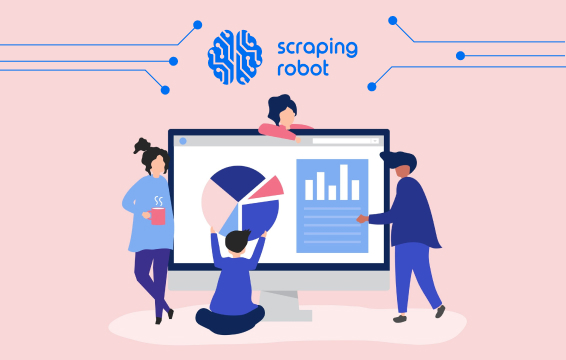3 Ways To Use Audience Analysis For Research And Growth

As a child, I loved live performances. I went to theater camp, performed in an improv comedy troupe, and had a short-lived career in the school choir. What do all these activities have in common? A live audience of course! No matter what kind of talents you are showing off, the immediate feedback of a live audience is one of the most nerve-wracking and exhilarating sensations in the world. You know right away whether your act is entertaining people or putting them to sleep. Now, as a writer, I somewhat miss that live feedback. Instead of having people clap after a performance, I send my pieces into the internet void and hope for the best.
In the business world and beyond, there is a similar problem. With no live audience ready to applaud or throw tomatoes, it can be hard to understand what your customers want and need. Thankfully, performing audience analysis helps you tap into these feelings and come away with a better understanding of how to better serve your community. With web scraping, it is easier than ever to quickly and thoroughly collect audience data. By performing this analysis, you can grow to your full potential without leaving your audience behind.
If you already know the basics of web scraping, use the table of contents below to navigate and learn how to use this analysis to your advantage.
Table of Contents
What Is Audience Analysis?

According to Wikipedia, Audience Analysis is a task performed early on in a project which consists of assessing the audience to make sure they have an appropriate level of information provided to them.
However, it is crucial that you first define your audience by determining demographics such as gender, age, location, religion, etc. Once you have defined the possible audiences, you can then select the priority audience to perform analysis on. By better understanding the types of audiences you want to reach, you are already on your way!
3 Different Types Of Audience Analysis

There are 3 main processes to analyze your audience: demographic, situational, and target. Each is a crucial step to better understanding the vast audience data the internet has to offer.
Demographic audience analysis
This type of analysis includes defining the gender, religion, age, socioeconomic level, education, and occupation of an audience. But this can also be extended to include an audience’s general belief and attitude that all help lead you to better knowing your audience. By understanding all these different aspects of an audience’s identity, you can create better marketing campaigns, products, and services that cater directly to the needs of the community you serve. Even worse, without doing proper analysis, you risk offending your audience or offering them something they do not need or already have. Demographic analysis is key to defining your mission and goals as a company or small business.
Situational audience analysis
This type of analysis builds is similar. In the realm of more traditional forms of speech, situational aspects of an audience include size, attitude towards the speaker, preliminary knowledge of the topic, and the occasion for the speech. In the world of digital marketing and media, this can be better understood as the size of your preferred audience, their attitude about your product/company, pre-existing knowledge, and what websites or social media channels they are seeing your ads on or interacting with your products and services. Because you are not speaking directly to a crowd, it is harder to gather this information when your audience might be spread out around the globe. But just like a world leader giving a speech, it is crucial in an online environment that you learn how to engage potential customers, especially within an online world of endless choices and audience data.
Target audience analysis
Once you have gathered enough demographic and situational audience analysis, you then must decide on your target audience. While people of many backgrounds may buy your product or use your services, there is likely a core group of users or a specific audience you would like to grow. With a targeted marketing campaign, you get better results by speaking to an audience’s specific needs instead of creating general content that speaks to everyone while appealing to no one. By knowing your ideal audience, you can better create audience analysis questions meant to help you understand your target audience.
3 Ways Audience Analysis Can Help Your Business

Using audience data to perform analysis is a crucial step to any successful marketing campaign. Even the process of creating your target audience(s) teaches you a ton about yourself and your goals as a business. By understanding the different audiences you want to target, you learn how to adapt your messaging to fulfill the needs of specific communities, helping you understand the flexibility of a product by analyzing all the different contexts in which it can be used. Below are three different ways audience analysis is important for growth.
1.Consumer behavior
By performing audience analysis, you will begin to understand how your consumers behave offline and online. With audience data available through social media, you can see what other kinds of products and personalities people follow which helps you understand their deeper desires. For example, instead of just identifying the audience most likely to seek out spa treatments, analysis helps you understand what kinds of treatments people are most likely to want based on the stressors present in their lives. Once you have this information, you can better predict what services to promote to which audiences, making you more successful in the long run by speaking to individual needs instead of painting with broad strokes.
2.Taking risks
There is always a moment where a company or small business must decide to grow. Taking risks is an essential part of this growth, but you do not want to take uninformed risks. With the right audience analysis questions, you can understand what kinds of risks are likely to have a positive outcome. For example, if audience data makes it clear that most of your customers are younger, then making changes to adapt to the demographic’s desires (making a product cheaper, eco-friendly, etc) helps ensure growth. On the other hand, if your target audience is less tech-savvy, creating an engaging newsletter through email might be more successful than social media campaigns.
How To Write An Audience Analysis Report

Once you have all this audience data, what is the best way to present it? Creating a report helps you make sure that everyone understands the results in a comprehensive yet simple way. First, you want to begin by explaining your audience analysis questions and defining your target audience. It is important to do this first so that anyone reading has the proper context for the research you conducted. Next, you need to create an in-depth audience profile that explains the demographic and situational characteristics of the target audience so each aspect of their identity is clear and concise. It is also important to explain the audience data and research methods used. Is this data collected from social media or from online marketplaces? To conclude, you should explain what you learned about the target audience and recommend steps for moving forward. If you exclude your beliefs about the next steps, you risk readers misunderstanding why the analysis was performed in the first place. By creating a comprehensive audience analysis report, you will impress your coworkers and help create a unified vision for growth.
Using Scraping Robot To Scrape Audience Data

In a world where intimidating amounts of data exists, a web scraping tool can help you extract and organize massive amounts of data quickly. The best part of using Scraping Robot is its versatility. With custom scraping solutions, you can scrape publicly available data from almost any website Contact us to get started, or check out the pricing for our modules here.
Social Media
As mentioned throughout this blog post, social media is one of the newest and best tools for performing audience analysis. When you scrape social media sites, you get a full picture of the online behavior of your target audience. You discover what accounts they follow, how they prefer to do online shopping and a general sense of their values and interests. Again, it is important to scrape multiple social media sites to understand which apps your preferred audience uses the most so you do not spend money advertising on sites they do not use.
Online Marketplace
With the ubiquity of sites like Amazon in our culture, more and more people are shopping online. Especially during this pandemic, online shopping is a safe and secure way to support local businesses from the safety of your home. All this information helps you establish a fair price point that is reasonable for your audience while still garnering enough profit to keep the lights on. It is also essential to understand which online sites your audience are most likely to use so you don’t spend too much time, money, and energy looking in the wrong places.
HTML
With Scraping Robot’s web scraper, you can scrape any HTML site and receive the entire page as output. This tool gives you seemingly endless options for what kind of audience data you need to determine your target audience. The government and other public agencies collect vital information regarding general income, education, and other data on different demographics. By scraping web pages and demographic resources, you can collect essential data to better understand your ideal audience.
Conclusion
Without the immediate feedback of a large crowd, it can be hard to determine the beliefs and preferences of your customer base. It can be especially hard with our global, online society because your audience might be all around the world instead of concentrated in one community. Thankfully, this interconnected world comes with lots of audience data. By using social media sites, audience profiles, and understanding where your purchases come from, audience analysis can help you make the right choices for your business moving forward. Doing this helps you understand your audience, make smart choices, and save money.
The information contained within this article, including information posted by official staff, guest-submitted material, message board postings, or other third-party material is presented solely for the purposes of education and furtherance of the knowledge of the reader. All trademarks used in this publication are hereby acknowledged as the property of their respective owners.
